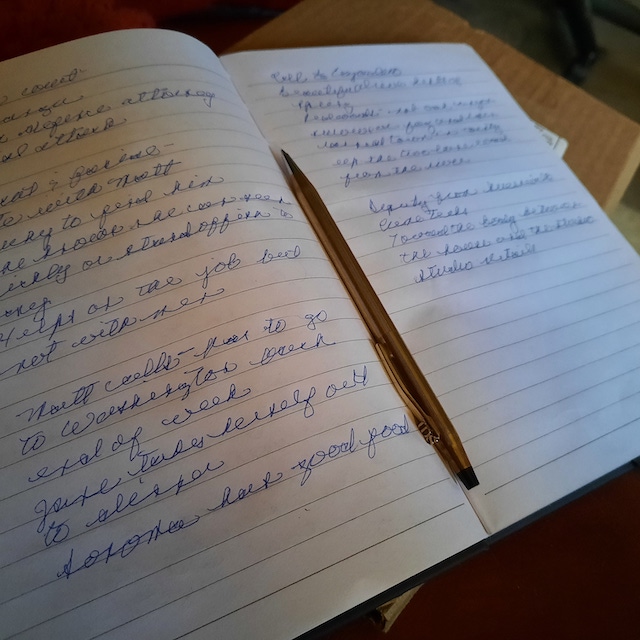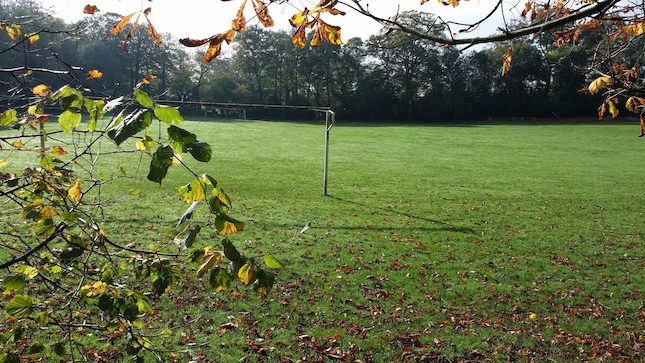How a Handwritten Synopsis Helps You Formulate Your Novel

Between Scene Cards and Writing
A personal synopsis is different than a marketing or promotional synopsis. You can stop here if you are thinking about writing a synopsis as part of a query package for an agent to market your book. This is about writing a synopsis for you, the author, before your write the novel.
Writing a personal synopsis is like discovery writing from a plan. I use Plottr to plan story beats, outline subplots, and develop character background. Plotting helps organize the story beats to create a framework for the story.
For my new novel, I found that even with the beats the story still wasn’t firm in my head. And I’m writing a novel where technical details are intrinsic to the story, a police procedural.
I decided to write a personal synopsis—a sequence of events with notes about character actions and feelings.
The Freeing Personal Synopsis Process
I wanted to get the story firm in my head before I started writing chapter by chapter. I went back to the old-fashioned notebook and pen method of recording thoughts.
When I write at the computer, I tend to self-edit as I go, correcting spelling and punctuation.
For the synopsis, handwriting records my thoughts without considering spelling or syntax. It serves as a record of ideas. Sentence fragments work: Matt calls. Date is off. Going to Washington, D.C. Jane relief.
That’s all I need for a scene, in the synopsis, as my detective drives along the Russian River heading toward a new murder investigation. She knows she has to call off a date, once again, because she won’t be available.
In the synopsis, I don’t describe the weather which is going to be important later in the story. I don’t describe the Russian River. I don’t describe how long it takes to get from Santa Rosa to the mythical small town, or the traffic. Or the beauty of the spring day.
My goal for the synopsis is to get the events in sequence and the people in each scene as the ideas flow from my head.
Handwriting Stimulates Freeflow Thought
What I like about the process, after I’ve filled in the scene cards, is the feeling of how the story flows.
For me, staring a scene cards and filling in blanks on the computer is great for getting the structure.
Handwriting the synopsis adds another aspect—the flow of the story.
Enriched Dimensions
As I write the synopsis, I discover:
- character attributes
- setting details – especially for clues
- missing characters that need to be added
- cause and effect situations – setup for later scenes
- details I don’t know that require further research
- original character attributes that need to change to make the story work better
- new complications
As I write the story, ideas come because I am in the story flow. These added dimensions come as I write. The process is more creative than trying to fill in scene cards to fit story beats. It’s like learning the story as I go without trying to fit in descriptions or dialogue.
The Story Essence
The idea of writing a synopsis is borrowed from my screenwriting friends. The synopsis is just the story. At this point there’s no breaking into chapters. The focus is getting the flow of the story from beginning to end.
Since I have already outlined the story beats, I know where the story is going. The process of writing elaborates the story, without getting bogged down with setting or dialogue or prose-writing craft.
It’s just me, writing and then refining as I go. As I go, I will write the story from beginning to end. It’s the bare story without refinements. It’s a draft of the novel’s first draft.
Think Through the Story
For some writers, writing a synopsis before the first draft may feel like extra work. But, the personal synopsis will save you rewriting time on the other end. The synopsis helps you think through the story, so you don’t need as many revisions after the first draft.
The synopsis helps you learn the story before you create the first draft. You will minimize plot holes and avoid extra scenes.
The process of writing by hand increases neural activity in the brain. That’s why the story flows with handwriting in a way that typing on a keyboard doesn’t.
Discover Your Story
Fiction is all about story. Your personal synopsis guides you toward a deeper story, beyond plot points in an outline.
As you tell the story to yourself, you discover story elements as your brain nurtures creative flow.
If you are grappling with your story, a personal synopsis may be the answer to enhancing your story.
Once you reach the end, you have story elements in place to write your novel.






